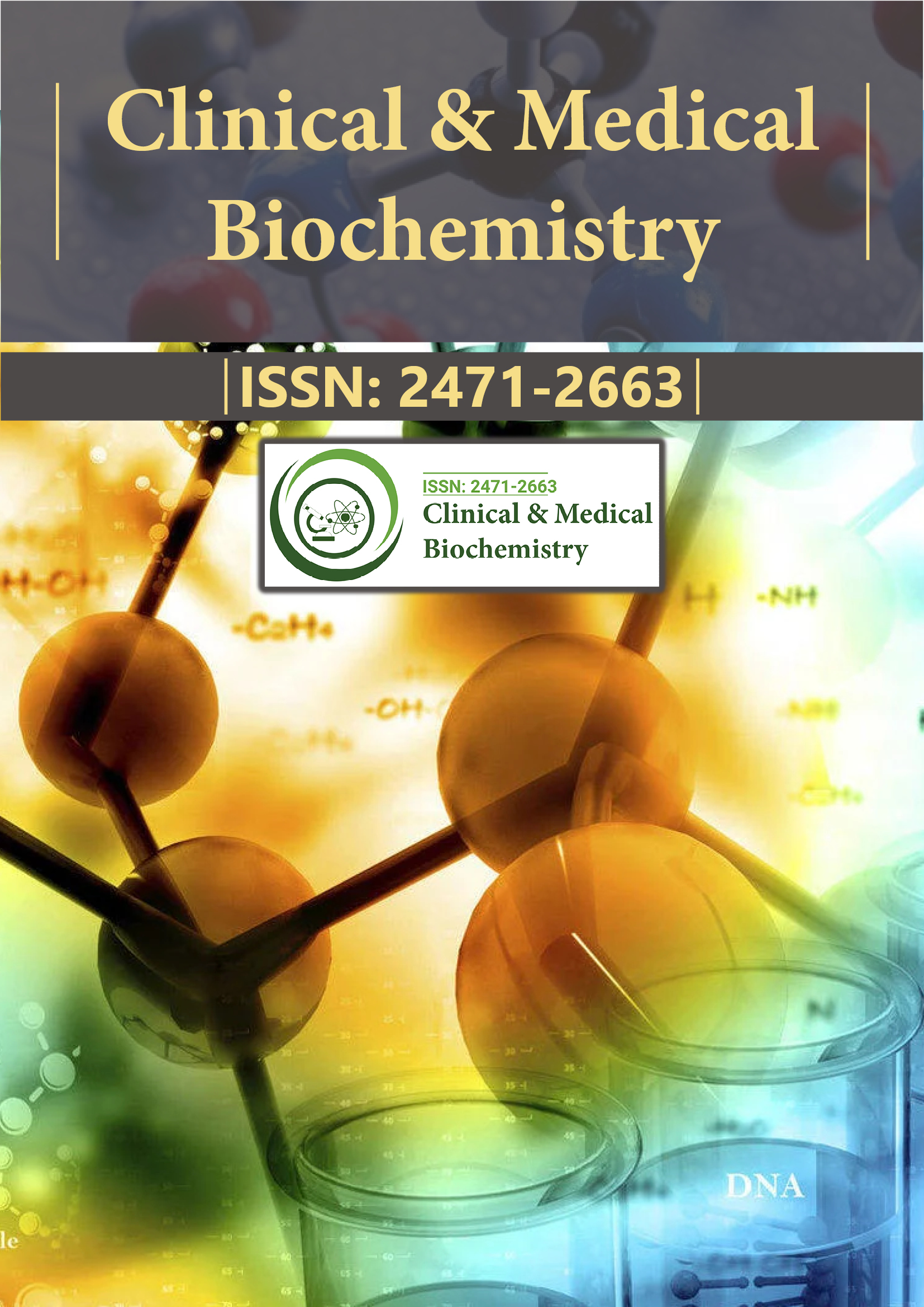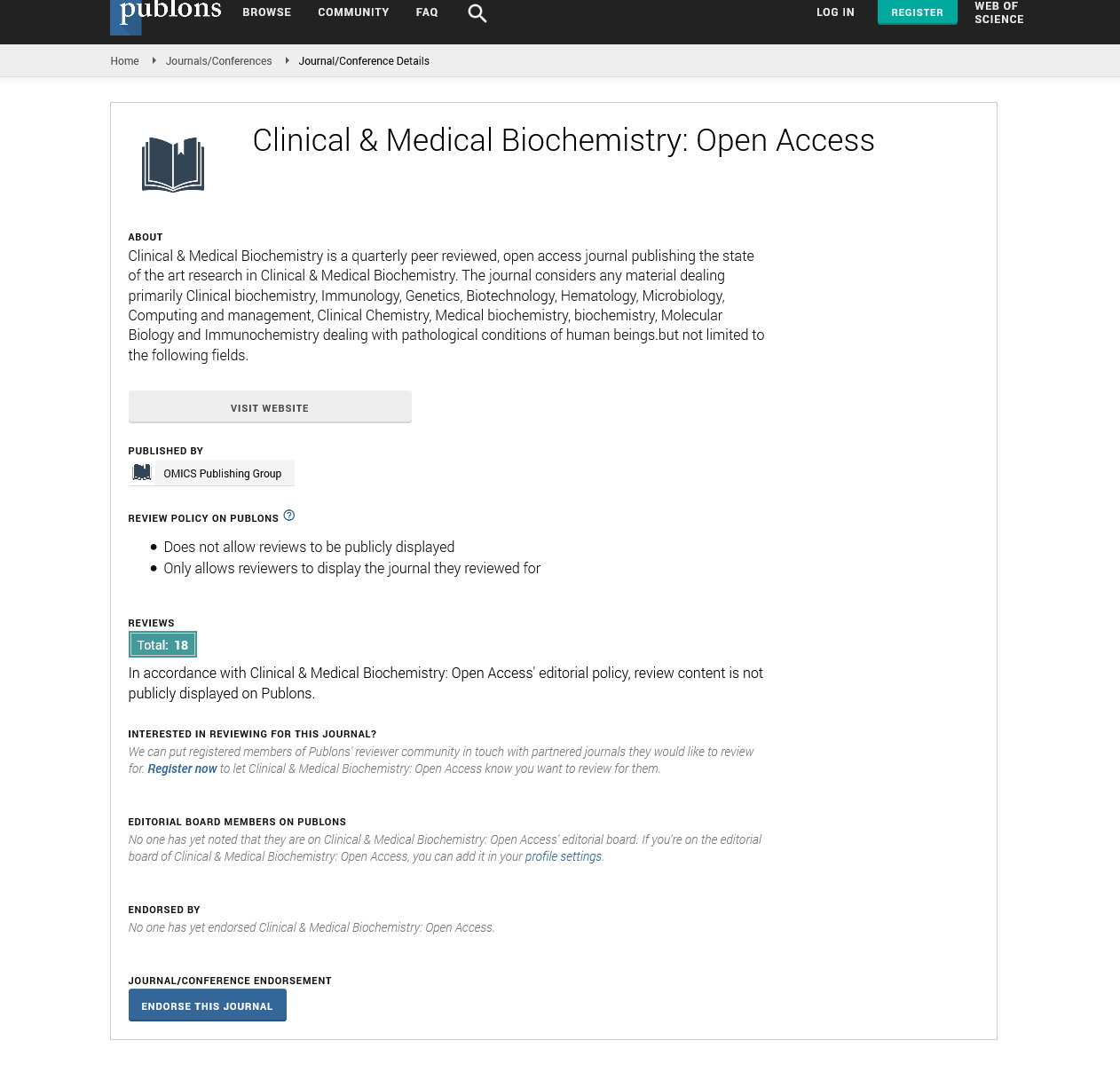Indexed In
- RefSeek
- Directory of Research Journal Indexing (DRJI)
- Hamdard University
- EBSCO A-Z
- OCLC- WorldCat
- Scholarsteer
- Publons
- Euro Pub
- Google Scholar
Useful Links
Share This Page
Journal Flyer

Open Access Journals
- Agri and Aquaculture
- Biochemistry
- Bioinformatics & Systems Biology
- Business & Management
- Chemistry
- Clinical Sciences
- Engineering
- Food & Nutrition
- General Science
- Genetics & Molecular Biology
- Immunology & Microbiology
- Medical Sciences
- Neuroscience & Psychology
- Nursing & Health Care
- Pharmaceutical Sciences
Opinion Article - (2025) Volume 11, Issue 1
Revolutionizing Diagnosis: Innovations, Challenges, and Future Directions
Manish Rao Ambedkar*Received: 26-Feb-2025, Manuscript No. CMBO-25-29230; Editor assigned: 28-Feb-2025, Pre QC No. CMBO-25-29230; Reviewed: 14-Mar-2025, QC No. CMBO-25-29230; Revised: 21-Mar-2025, Manuscript No. CMBO-25-29230; Published: 28-Mar-2025, DOI: 10.35841/2471-2663.25.11.241
Description
Diagnostics is the cornerstone of effective medical care, serving as the first step in identifying, managing and monitoring diseases. Through the application of scientific techniques and tools, diagnostics enables healthcare professionals to determine the nature of a patient’s illness, the stage of progression and the most suitable treatment options. As medicine continues to advance, diagnostics evolves in parallel, becoming faster, more accurate and more personalized. From basic clinical evaluations to complex molecular tests, diagnostics has a profound impact on patient outcomes and public health.
Historically, diagnostic practices relied heavily on clinical observations and patient-reported symptoms. While still important, these methods have been enhanced by technological innovations such as imaging techniques, laboratory testing, genetic profiling and point-of-care testing. Each approach contributes unique insights into a patient’s condition, providing a more complete picture of health. Laboratory tests remain one of the most frequently used diagnostic tools in medicine. These include blood counts, metabolic panels, urinalysis and hormone measurements, which help identify infections, organ dysfunction, immune responses and other systemic changes. The ability to detect disease-specific biomarkers has dramatically improved diagnostic accuracy, especially for conditions like cancer, cardiovascular disease and autoimmune disorders.
Imaging technologies such as X-rays, CT scans, MRI and ultrasound have transformed diagnostics by allowing physicians to visualize internal organs and structures non-invasively. These tools are invaluable in detecting fractures, tumors, organ damage and congenital anomalies. Recent innovations, including functional imaging and contrast-enhanced techniques, offer realtime and highly detailed views of biological processes. With artificial intelligence increasingly integrated into radiology, image analysis is becoming even more precise, assisting radiologists in detecting subtle abnormalities that may be missed by the human eye.
Another breakthrough in diagnostics has been the advancement of molecular and genetic testing. These tests analyze DNA, RNA and proteins to identify genetic predispositions, mutations and gene expression patterns. In oncology, for example, molecular diagnostics can determine whether a tumor carries specific genetic mutations, helping guide targeted therapies. In infectious disease, techniques such as Polymerase Chain Reaction (PCR) and Next-Generation Sequencing (NGS) allow for rapid identification of pathogens, including bacteria, viruses and fungi. This has proven especially critical in the control of outbreaks, such as COVID-19, where early and accurate diagnosis directly influenced public health strategies.
Point-of-care diagnostics has gained significant popularity due to its convenience and speed. These are tests performed at or near the site of patient care, often yielding results within minutes. Common examples include blood glucose monitors, rapid antigen tests and portable blood gas analyzers. Point-of-care testing is particularly useful in emergency settings, rural clinics and during pandemics, where timely decisions are vital. It empowers healthcare providers to act immediately on diagnostic findings, improving clinical outcomes and reducing the need for hospital admissions.
Another area witnessing remarkable growth is digital diagnostics, which leverages software, mobile devices and wearable technology to monitor and analyze patient data in real-time. Devices that track heart rate, oxygen saturation and physical activity can detect early signs of disease and alert both patients and providers to potential health issues. Mobile health applications and telemedicine platforms also offer diagnostic questionnaires and symptom checkers, enhancing access to basic diagnostic support for individuals in remote or underserved areas.
In pathology, the digital transformation is also notable. Digital pathology involves scanning traditional glass slides into high-resolution digital images, which can be viewed, shared and analyzed using computer algorithms. This technology facilitates remote consultations, better data storage and even the use of innovations are reshaping how diagnoses are made, especially in complex fields like oncology and neurology.
While the benefits of modern diagnostics are clear, they also come with challenges. False positives and false negatives can lead to misdiagnosis, unnecessary treatments, or delayed care. Ensuring the accuracy, reliability and standardization of diagnostic tests remains a priority. Regulatory agencies such as the FDA and WHO play essential roles in evaluating and approving diagnostic tools to maintain patient safety and trust. Furthermore, access to diagnostics is unequal across different regions of the world. Many low-income countries face shortages of diagnostic infrastructure, trained personnel and essential equipment. Bridging this gap is critical to achieving global health equity.
Cost is another consideration. Some advanced diagnostic procedures, especially molecular and imaging tests, can be expensive and may not be covered by insurance. This underscores the need for healthcare systems to balance innovation with cost-effectiveness, ensuring that essential diagnostic services are accessible to all who need them.
Education and training are also vital. Clinicians must be proficient in selecting appropriate diagnostic tests and interpreting results accurately. Misuse or overuse of diagnostics can burden healthcare systems and lead to patient harm. As such, diagnostic stewardship similar to antibiotic stewardship is an emerging concept promoting the judicious use of diagnostic tools.
Citation: Ambedkar MR (2025). Revolutionizing Diagnosis: Innovations, Challenges and Future Directions. Clin Med Bio Chem. 11:241.
Copyright: © 2025 Ambedkar MR. This is an open-access article distributed under the terms of the Creative Commons Attribution License, which permits unrestricted use, distribution and reproduction in any medium, provided the original author and source are credited.

